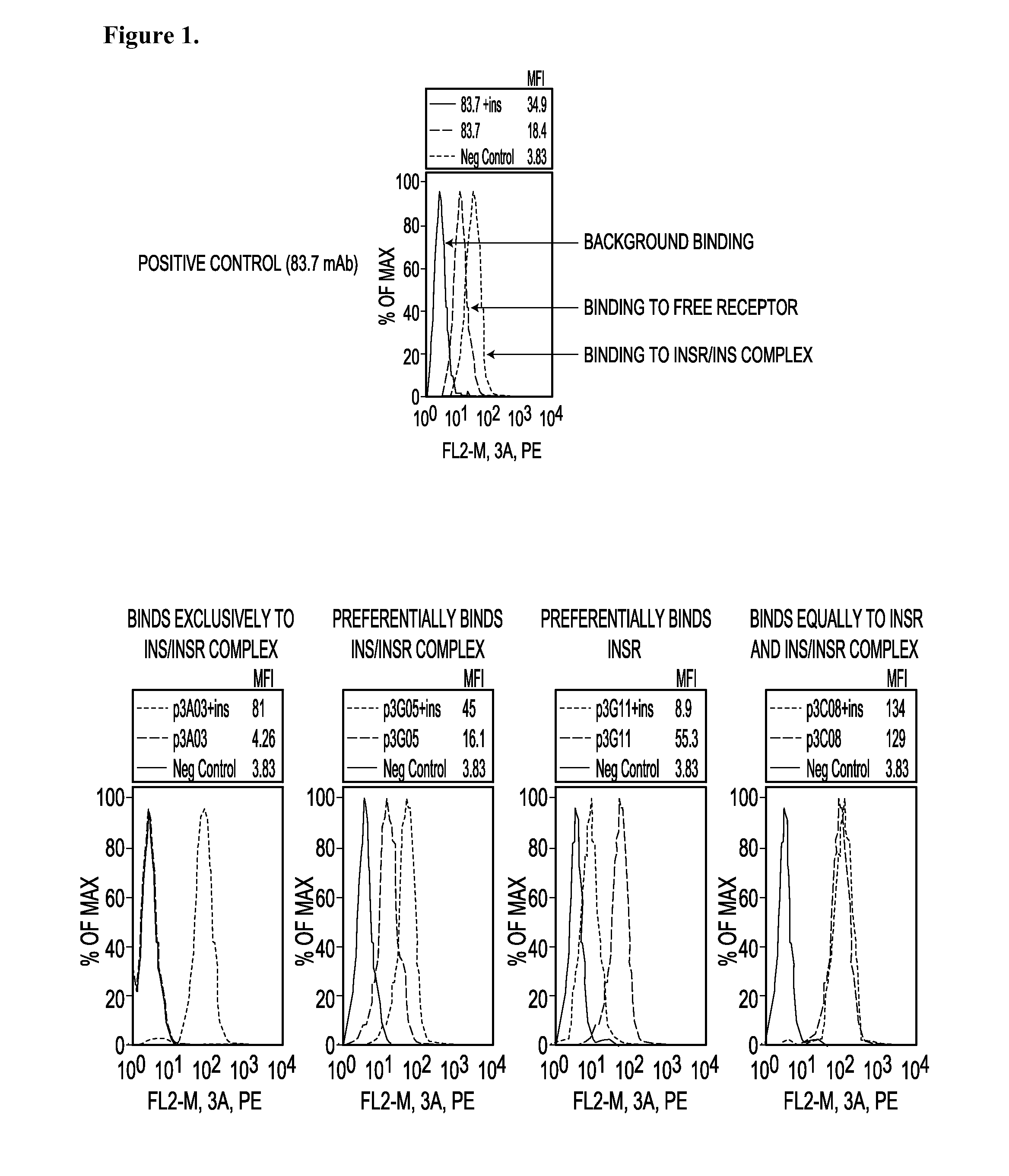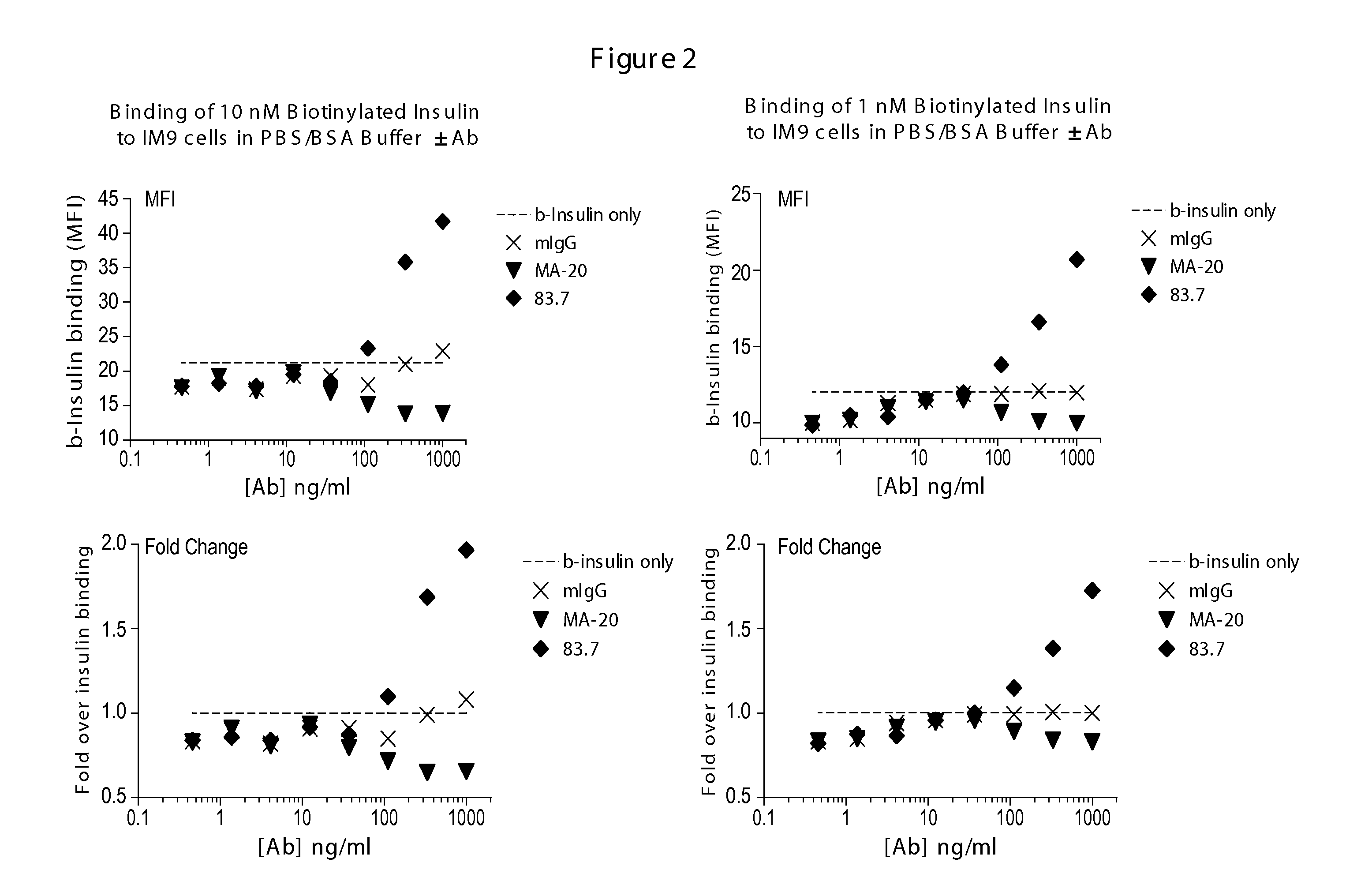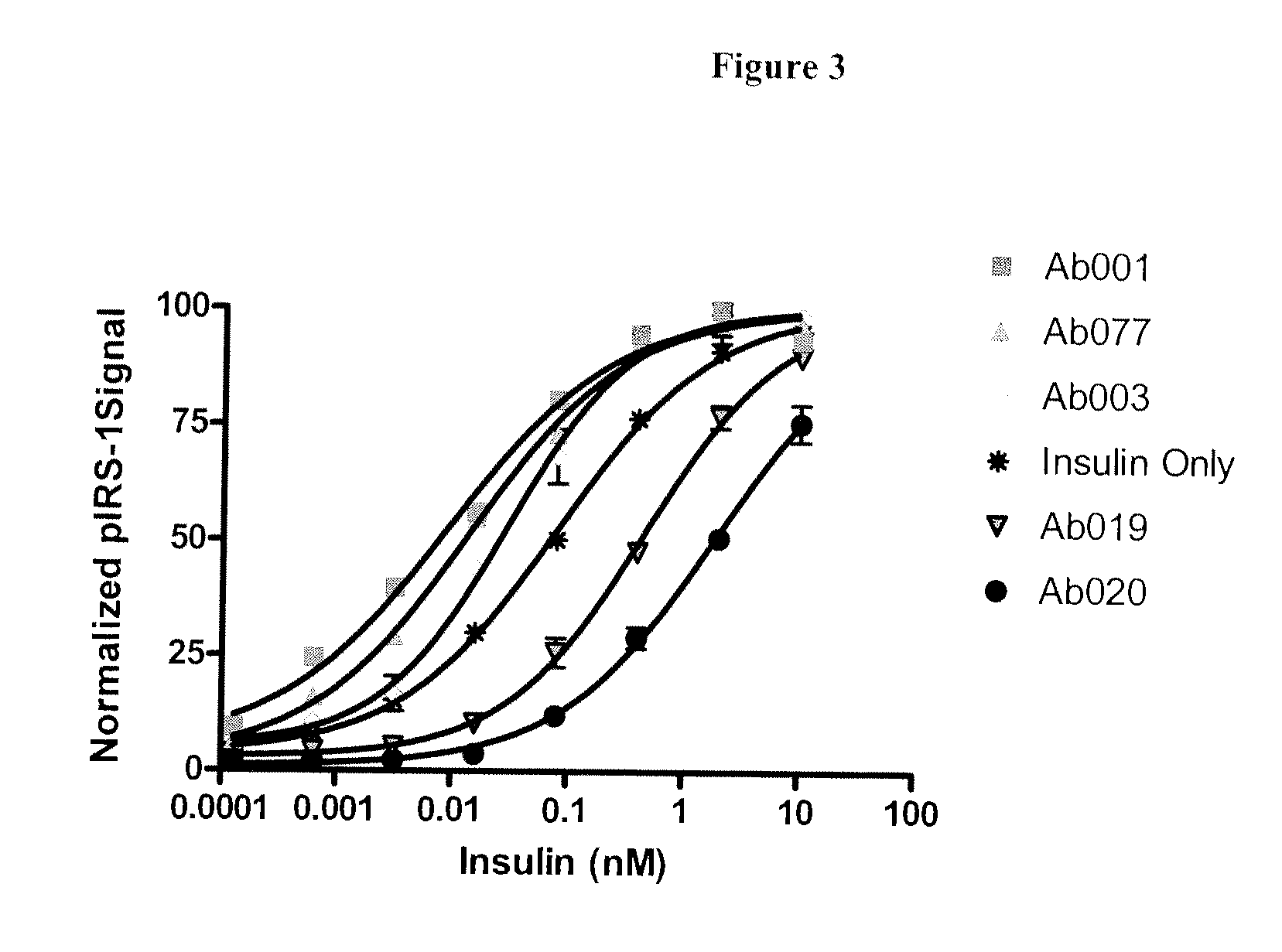Novel Modulators
a technology of insulininsulin receptor and modulator, which is applied in the field of new modulators and/or agonists of the insulininsulin receptor signaling complex, can solve the problems of high risk of complications, large percentage of type 2 diabetic subjects losing their response, and inability to meet the needs of patients, so as to improve the ability to tolerate glucose, slow down, or normalize the weight gain of a subj
- Summary
- Abstract
- Description
- Claims
- Application Information
AI Technical Summary
Benefits of technology
Problems solved by technology
Method used
Image
Examples
example 1
Isolation of Anti-INSR Antibodies from Antibody Phage Display Libraries
(1) Phage Panning and Rescue
[0537]A. Naïve Antibody Phage Display Libraries
[0538]Human insulin receptor (hINSR) (R&D Systems, MN) was biotinylated with Sulfo-NHS-LC-Biotin (Pierce, Rockford, Ill.) using the manufacturer's protocol and 16-fold molar excess of biotin reagent. The biotinylation of hINSR was confirmed by surface plasmon resonance (SPR).
[0539]For the first round of phage panning, 1.6×1011 cfu of phage particles from an scFv phage display library (BioInvent, Lund, Sweden) were blocked for 1 h at room temperature (RT) in 1 ml of 5% milk / PBS (Teknova, Hollister, Calif.) with gentle rotation. Blocked phage were twice deselected for 30 minutes against streptavidin-coated magnetic Dynabeads® M-280 (Invitrogen Dynal AS, Oslo, Norway). To form the biotin-hINSR-hINS complex, 100 pmoles of biotinylated hINSR was preincubated with excess (2,100 pmoles) human insulin (hINS) (Sigma, Mo.) dissolved in 5% milk / PBS, ...
example 2
Receptor Occupancy Screen to Determine Antibody Binding to INSR in the Presence or Absence of Human Insulin
[0547]This example describes the use of flow cytometric (FACS) based assays to measure differential antibody binding to cells in the presence or absence of human insulin (hINS). Anti-insulin receptor (INSR) antibodies from phage display libraries were screened in the assays to identify modulators of INS-INSR binding.
[0548]IM-9 cells were obtained from the American Type Culture Collection (ATCC) and maintained in RPMI 1640+10% FBS. Prior to use in assays cells were washed in serum-free RPMI 1640, counted and the concentration adjusted to 2×106 cells / ml in RPMI 1640+0.5% BSA (Sigma-Aldrich). The cells were cultured overnight in this media and as such were designated as “serum-starved.” These cells were washed once and resuspended at 2×106 cells / ml in PBS containing 0.5% BSA and 0.01% sodium azide (FACS buffer).
[0549]Cells exposed to insulin were resuspended in FACS buffer supplem...
example 3
Biotinylated Ligand Screen to Determine the Effects of Anti-INSR Antibodies on Insulin Binding to INSR
[0556]This example describes the use of FACS based assays to measure differential ligand (human insulin) binding to cells in the presence or absence of anti-INSR antibodies. Anti-INSR antibodies from phage display libraries were screened in the assays to identify modulators of the INS-INSR complex.
[0557]IM 9 cells were obtained from the American Type Culture Collection (ATCC) and maintained in RPMI 1640+10% FBS. Prior to use in assays cells were washed in serum-free RPMI 1640, counted and the concentration adjusted to 2×106 cells / ml in RPMI 1640+0.5% BSA (Sigma-Aldrich). The cells were cultured overnight in this media and as such were designated as “serum-starved.” These cells were washed once and resuspended at 2×106 cells / ml in PBS containing 0.5% BSA (binding buffer).
[0558]Serum-starved cells were pre-exposed to INSR antibodies at room temperature for 15 minutes and then incubate...
PUM
| Property | Measurement | Unit |
|---|---|---|
| equilibrium dissociation constant KD | aaaaa | aaaaa |
| equilibrium dissociation constant | aaaaa | aaaaa |
| binding affinity | aaaaa | aaaaa |
Abstract
Description
Claims
Application Information
 Login to View More
Login to View More - R&D
- Intellectual Property
- Life Sciences
- Materials
- Tech Scout
- Unparalleled Data Quality
- Higher Quality Content
- 60% Fewer Hallucinations
Browse by: Latest US Patents, China's latest patents, Technical Efficacy Thesaurus, Application Domain, Technology Topic, Popular Technical Reports.
© 2025 PatSnap. All rights reserved.Legal|Privacy policy|Modern Slavery Act Transparency Statement|Sitemap|About US| Contact US: help@patsnap.com



